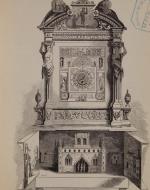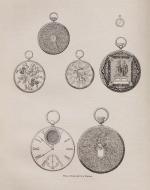Created by Christianna Poblete on Mon, 02/17/2025 - 22:41
Description:
At the Great Exhibition's conclusion, over 100 copies of the four-volume 'Reports by the Juries' were distributed to foreign governments and notable participants. The reports consist of the juries' comments and assessments of the works displayed in the exhibition. The idea and decision to illustrate the reports with photographs is attributed to Prince Albert (1819-61). These items were also presented to Queen Victoria. Within these items held what was seen as Britain's newest advancements in technology and innovation, including the presentation of a plethora of Clocks and Watches. Although clocks and watches may seem to have one purpose, the Great Exhibition emphasized just how versatile and creative their functions can be.
Today, clocks and watches have evolved into something commonplace; however, their use is undeniably timeless. From your sleep schedule to the invention of completing any cellular task from a small screen on your wrist, clocks and watches have only grown in necessity, their appearance shapeshifting with the times. While some may think clocks and watches are used simply to tell the time, the Great Exhibition highlighted the newest innovations from different countries, creating chronometers and other styles of clocks to keep track of the date, time, and even the astrological placement of the sun and other planets. And it could do so no matter the surrounding temperature or pressure of the watch. Not only were these tools for time, but they represented history and art too. With years of effort put into these creations, they were also considered works of art. For example, ties to Roman and Greek inspiration through the statues and engraving adorning them. As a tool that keeps track of history, its various uses and skills have only grown and will continue to evolve for years to come. It is irrefutable that these timepieces are timeless.
Booth for Clocks, Chronometers, and Watches at our Great Exhibition of 1851, designed by Christianna Poblete, 2025. This booth is constructed with a mix of mediums. From images to fabric, and even a little clock I had fortunately been gifted last semester, the booth highlights the diversity of clocks and watches displayed at the Great Exhibition. The background was created with an AI-generated photo of the Great Exhibition as I wanted to incorporate the beautiful glass structure of the Crystal Palace. I then put in a few characters including Queen Victoria as many of the presented clocks were for her specifically. To accentuate the gold of some of the images I had, I incorporated a gold fabric floor panel, as well as gold pipe cleaners to hang watches from the top of the box. I did this to represent the pocket watch aspect of some of the works that would have been at the exhibit.






